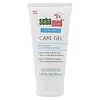What's inside
What's inside
 Key Ingredients
Key Ingredients

 Benefits
Benefits

 Concerns
Concerns

 Ingredients Side-by-side
Ingredients Side-by-side

Water
Skin ConditioningPanthenol
Skin ConditioningPropylene Glycol
HumectantNiacinamide
SmoothingSaccharide Isomerate
HumectantSalicylic Acid
MaskingHamamelis Virginiana Leaf Extract
Skin ConditioningAloe Barbadensis Leaf Extract
EmollientCentella Asiatica Leaf Extract
Skin ConditioningGlycerin
HumectantButylene Glycol
HumectantPentylene Glycol
Skin ConditioningPotassium Thiocyanate
StabilisingLactoferrin
Skin ConditioningLactoperoxidase
StabilisingGlucose Oxidase
StabilisingGlucose Pentaacetate
Emulsion StabilisingPotassium Phosphate
BufferingDisodium Phosphate
BufferingRubus Idaeus Leaf Extract
Skin ConditioningRibes Nigrum Leaf Extract
PerfumingSorbic Acid
PreservativeCinnamomum Cassia Bark Extract
MaskingZingiber Officinale Root Extract
MaskingSanguisorba Officinalis Root Extract
CleansingSodium Palmitoyl Proline
Skin ConditioningNymphaea Alba Flower Extract
Skin ConditioningDipropylene Glycol
HumectantPropanediol
SolventPolygonum Cuspidatum Root Extract
AntioxidantMyristyl Alcohol
EmollientPCA
HumectantAcrylates/C10-30 Alkyl Acrylate Crosspolymer
Emulsion StabilisingGalactosyl Salicylate
AntiseborrhoeicEthylhexylglycerin
Skin ConditioningCapryloyl Salicylic Acid
ExfoliatingAsiaticoside
AntioxidantAsiatic Acid
Skin ConditioningMadecassic Acid
Skin ConditioningDisodium EDTA
Fructooligosaccharides
HumectantBeta Vulgaris Root Extract
Skin ConditioningPotassium Lactate
BufferingLactic Acid
BufferingChlorella Vulgaris Extract
Skin ConditioningPhenoxyethanol
PreservativeZinc PCA
HumectantCeteareth-25
CleansingCetyl Alcohol
EmollientBehenic Acid
CleansingCholesterol
EmollientCeramide NP
Skin ConditioningCeramide Ns
Skin ConditioningCeramide Eos
Skin ConditioningCeramide EOP
Skin ConditioningCeramide AP
Skin ConditioningCaprooyl Phytosphingosine
Skin ConditioningCaprooyl Sphingosine
Skin ConditioningWater, Panthenol, Propylene Glycol, Niacinamide, Saccharide Isomerate, Salicylic Acid, Hamamelis Virginiana Leaf Extract, Aloe Barbadensis Leaf Extract, Centella Asiatica Leaf Extract, Glycerin, Butylene Glycol, Pentylene Glycol, Potassium Thiocyanate, Lactoferrin, Lactoperoxidase, Glucose Oxidase, Glucose Pentaacetate, Potassium Phosphate, Disodium Phosphate, Rubus Idaeus Leaf Extract, Ribes Nigrum Leaf Extract, Sorbic Acid, Cinnamomum Cassia Bark Extract, Zingiber Officinale Root Extract, Sanguisorba Officinalis Root Extract, Sodium Palmitoyl Proline, Nymphaea Alba Flower Extract, Dipropylene Glycol, Propanediol, Polygonum Cuspidatum Root Extract, Myristyl Alcohol, PCA, Acrylates/C10-30 Alkyl Acrylate Crosspolymer, Galactosyl Salicylate, Ethylhexylglycerin, Capryloyl Salicylic Acid, Asiaticoside, Asiatic Acid, Madecassic Acid, Disodium EDTA, Fructooligosaccharides, Beta Vulgaris Root Extract, Potassium Lactate, Lactic Acid, Chlorella Vulgaris Extract, Phenoxyethanol, Zinc PCA, Ceteareth-25, Cetyl Alcohol, Behenic Acid, Cholesterol, Ceramide NP, Ceramide Ns, Ceramide Eos, Ceramide EOP, Ceramide AP, Caprooyl Phytosphingosine, Caprooyl Sphingosine
 Reviews
Reviews

Ingredients Explained
These ingredients are found in both products.
Ingredients higher up in an ingredient list are typically present in a larger amount.
Glycerin is already naturally found in your skin. It helps moisturize and protect your skin.
A study from 2016 found glycerin to be more effective as a humectant than AHAs and hyaluronic acid.
As a humectant, it helps the skin stay hydrated by pulling moisture to your skin. The low molecular weight of glycerin allows it to pull moisture into the deeper layers of your skin.
Hydrated skin improves your skin barrier; Your skin barrier helps protect against irritants and bacteria.
Glycerin has also been found to have antimicrobial and antiviral properties. Due to these properties, glycerin is often used in wound and burn treatments.
In cosmetics, glycerin is usually derived from plants such as soybean or palm. However, it can also be sourced from animals, such as tallow or animal fat.
This ingredient is organic, colorless, odorless, and non-toxic.
Glycerin is the name for this ingredient in American English. British English uses Glycerol/Glycerine.
Learn more about GlycerinPanthenol is a common ingredient that helps hydrate and soothe the skin. It is found naturally in our skin and hair.
There are two forms of panthenol: D and L.
D-panthenol is also known as dexpanthenol. Most cosmetics use dexpanthenol or a mixture of D and L-panthenol.
Panthenol is famous due to its ability to go deeper into the skin's layers. Using this ingredient has numerous pros (and no cons):
Like hyaluronic acid, panthenol is a humectant. Humectants are able to bind and hold large amounts of water to keep skin hydrated.
This ingredient works well for wound healing. It works by increasing tissue in the wound and helps close open wounds.
Once oxidized, panthenol converts to pantothenic acid. Panthothenic acid is found in all living cells.
This ingredient is also referred to as pro-vitamin B5.
Learn more about PanthenolPhenoxyethanol is a preservative that has germicide, antimicrobial, and aromatic properties. Studies show that phenoxyethanol can prevent microbial growth. By itself, it has a scent that is similar to that of a rose.
It's often used in formulations along with Caprylyl Glycol to preserve the shelf life of products.
Propylene Glycol is an odorless, colorless liquid. As a humectant, it helps skin retain moisture. It also aids in delivering active ingredients.
Another role of this ingredient is preventing a product from melting or freezing. Propylene glycol also adds antimicrobrial properties to a product, elongating product lifespan.
This ingredient is considered an organic alcohol and commonly added into both cosmetics and foods.
Those with sensitive skin or conditions may develop a rash when using this ingredient.
Learn more about Propylene GlycolWater. It's the most common cosmetic ingredient of all. You'll usually see it at the top of ingredient lists, meaning that it makes up the largest part of the product.
So why is it so popular? Water most often acts as a solvent - this means that it helps dissolve other ingredients into the formulation.
You'll also recognize water as that liquid we all need to stay alive. If you see this, drink a glass of water. Stay hydrated!
Learn more about Water